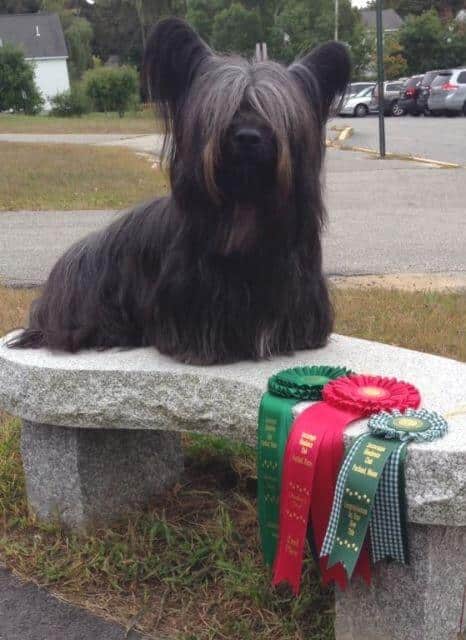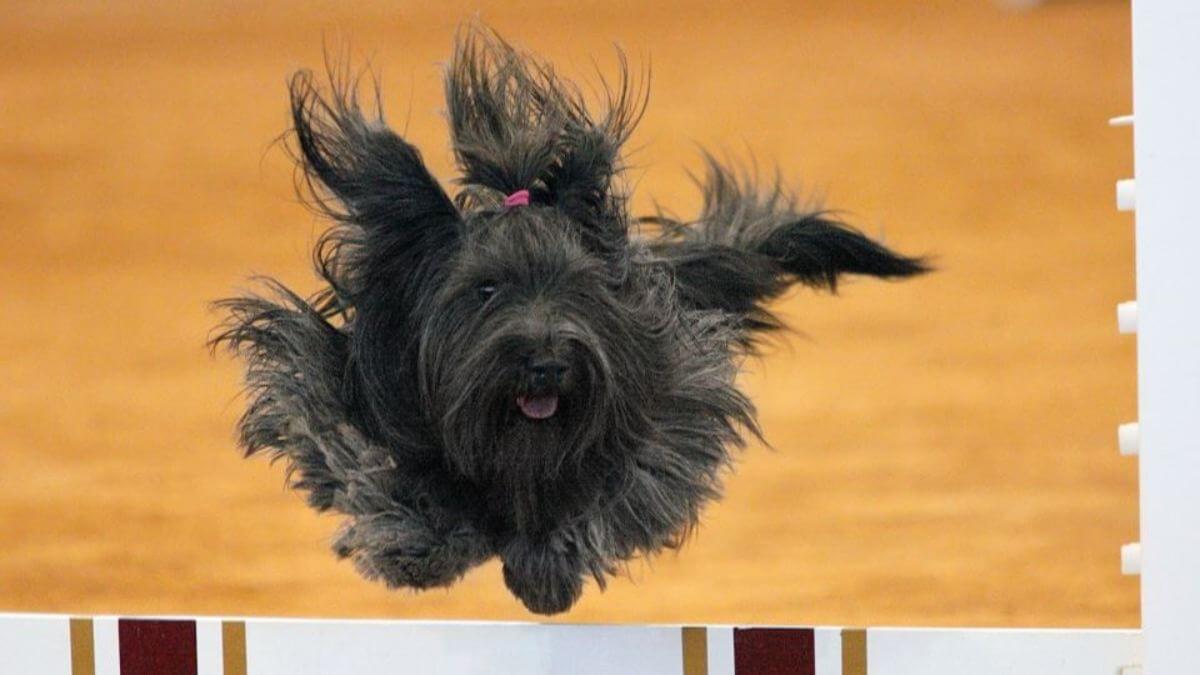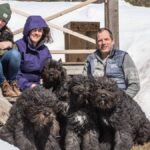This article was originally published in Showsight Magazine, April 2015 issue.
The Performance Skye Terrier
Skye Terriers are among the oldest of terrier breeds. Though not high in popularity rankings today, the Skye was the most widely known of all the terriers down to the end of the 19th century. Queen Victoria’s early interest and Sir Edwin Landseer’s paintings featuring the breed helped attract attention. The Skye Terrier was first registered with the AKC in 1887 and was one of the most important breeds at American bench shows before the turn of the century. Other than somewhat of an increase in size, they look pretty much the same today as they did hundreds of years ago. Skye Terriers were bred to take care of farm vermin in their native land, the Isle of Skye off the coast of Scotland. Anyone who has the opportunity to share their life with a Skye is fortunate and the breed currently enjoys a small but passionately devoted following.
Conventional belief is that Skyes are independent by nature and not easily taught. In reality, Skyes are very devoted and fiercely loyal to those they love and are very trainable. Given the chance and with creative instruction, Skyes very successfully participate in competitive Obedience, Agility, Rally and Tracking, as well as being great Therapy dogs. Skye Terrier owners must understand that the breed is sensitive to correction and, while needing firm guidance, must be treated fairly. Skyes tend to be reserved by nature and require ongoing socialization from birth to ensure a happy and outgoing personality.
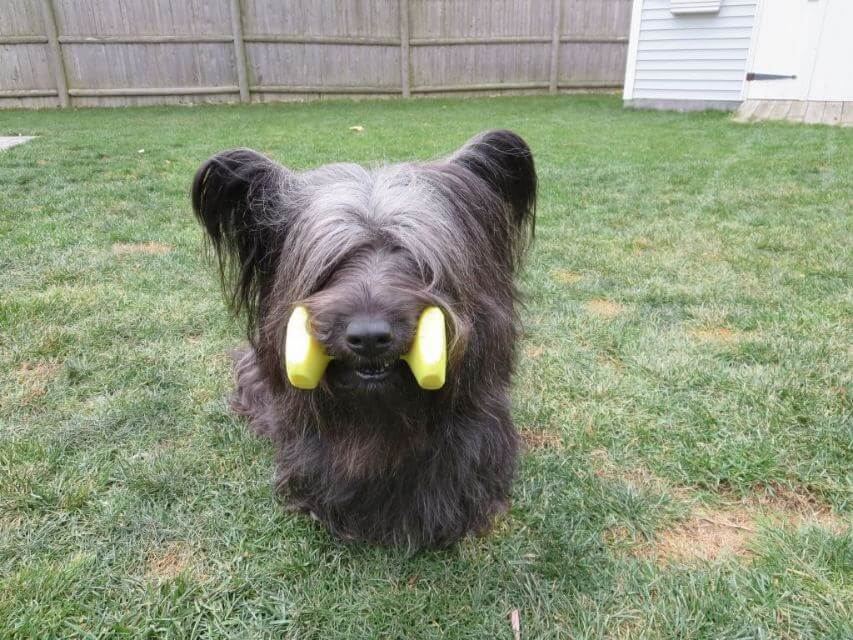
We have found that competing in performance events is one way to help achieve this. Skyes are not necessarily easy to train, but if they are convinced there’s a reason to do something they are happy to comply. They are also very smart and easily bored once they learn an activity. Drilling a Skye with too much repetition is usually counter-productive, as is having sessions run beyond a certain point. Patience and positive reinforcement is necessary, with an abundance of praise. For any level, finding an instructor with experience working with terriers can be a challenge, so owners need to advocate for what they think is best for their dog. Skyes enjoy putting their own spin on things, so sometimes the finer points of an obedience exercise is lost on them.
Rigidity won’t work, so the handler can’t initially be worried about perfectly straight sits, or flawless heeling. We integrate novice training into daily life, so that it seems natural to our Skyes. Upper levels of obedience training require more strategy and training time, but is time well spent. Skyes are an uncommon sight competing at any level in the obedience ring and are sure to attract public attention. We have successfully titled a number of our Seamist Skyes in Novice and Open Obedience, as well as trained for the ultimate goal of Utility. Back in the 1970s, Beverly Hayes actually attained Utility titles on several of her Northridge Skyes. For those people who think that competitive obedience is perhaps a bit too rigid for them and their Skye, Rally Obedience is a good alternative. Perfect heel position is not required and the novice class is all on lead. At every level—Novice, Advanced and Excellent, the handler may talk to and encourage their dog throughout the course. This helps create a real connection between handler and dog, something that Skyes thrive on; ours love it.
There are currently several Skyes competing in the Rally ring and at least one has earned his Rally Advanced Excellent (RAE) title. Darlene Sumner competes with her two Skyes, Sabrina and Norman, in agility. Darlene and Sabrina have competed several times at the prestigious AKC/Eukanuba National Agility Championship. Darlene says, “Agility and Skye terrier are not normally seen in the same sentence. But, believe it or not, they are quite capable and can be quite good at it. Their body structure was developed for rugged terrain to kill vermin, thus they have the ability for jumping, climbing the A frame and twisting through the weaves. I prefer to jump at a preferred jump height of 4″ less than their regular jump height and to do running contacts, especially for the A frame. Both keep less stress on their long backs. “Training, in my opinion, should always be short in time and long in patience. Use the best treats you can and praise highly.
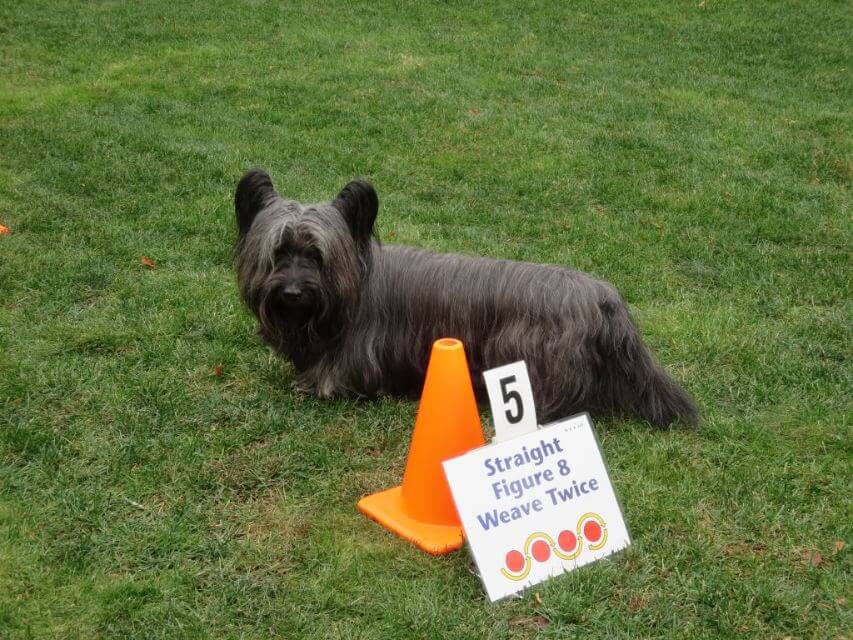
All training is done in baby steps and always ending on a positive note. This is where their loyalty to their people pays off. Skyes will usually focus primarily on their person.” Skyes don’t tend to have excitable dispositions and a Skye with basic training and good socialization can fairly easily transition into therapy dog instruction. They are a moderate size, so they are not as overwhelming as a larger breed may be to some people, or too small to be considered fragile. Their size makes it easy to lift them to be petted, or settled onto a bed for someone who may be infirm. Skyes are generally not a breed that is familiar to most people, so introducing one is a good conversation starter. Skyes are great listeners and can be a reassuring influence for children who need companionship in reading programs, or even in a therapist’s office to offer quiet comfort.
We have four Seamist generations of certified therapy (TDI) Skyes and one with an AKC THDA title. Whatever the chosen activity, therapy visits are among the most rewarding experiences to have with your dog. As with a number of AKC breeds, there is concern about the low registration numbers for Skye Terriers worldwide. Unfortunately a Skye Terrier most likely isn’t a breed of dog that comes to mind for someone looking for a performance or therapy dog. They are not suitable for everyone, but no breed of dog is. Skyes are terrific all round dogs with unique and endearing personalities. If they could be seen as the versatile dogs they are, it would go far in improving their popularity. For those of us who love the breed, there is no other dog that compares to them.
